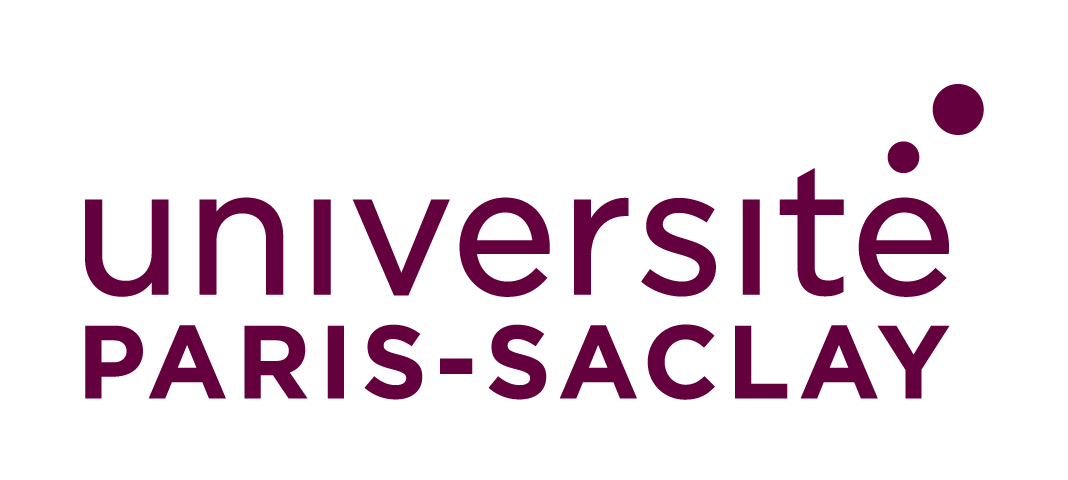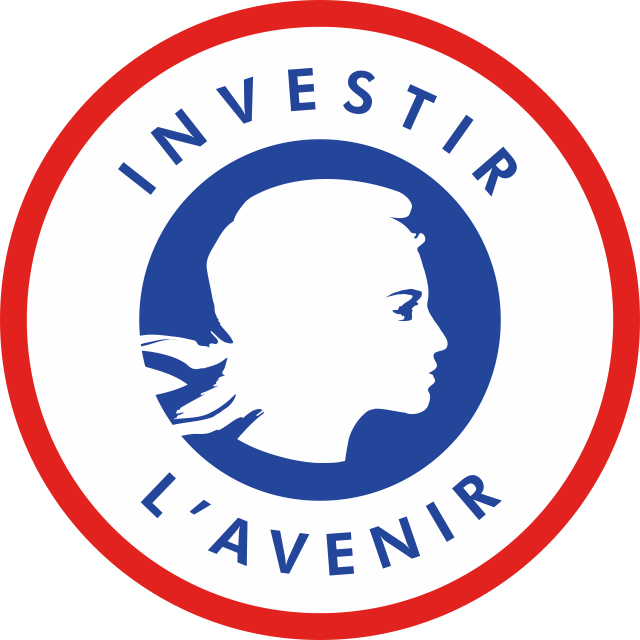
Enhanced rock weathering (ERW) is a carbon dioxide removal technology which has the potential for rapid large-scale upscaling, but has not yet full technological readiness. ERW refers to an artificial acceleration of the natural reaction of silicate-bearing rocks with atmospheric carbon dioxide forming carbonates in the soil - thereby removing carbon dioxide from the atmosphere. An acceleration of the reaction by orders of magnitude can be achieved by grinding rock material and spreading it over large land areas. As ERW is non-exclusive, it can be integrated together with other CDR technologies with potential synergies.
France, Germany, Italy, Spain and Poland have been identified as the most suitable countries in Europe for the application of ERW. For example, 40% of emission reduction targets for 2030 could be achieved in France, more than enough to offset current greenhouse gas emission from the agricultural sector in France. Multiple field-trials and start-up have been initiated to test ERW under field conditions. Nonetheless, ERW remains mostly absent in the portfolio of farming measures explored in ongoing research projects supporting the EU’s Green Deal ( e.g. Climate Farm Demo, ClienFarms). Key challenges are monitoring, reporting and verification (MRV) and certification, low awareness level of the technology, European Union policy regulation, unclear environmental side effects & co-benefits for farmers.
The hybrid workshop brings together scientists from different disciplines & startups to discuss the barriers and opportunities of ERW implementation, identify research directions, and explore the potential of this innovative technology in combating climate change from multiple angles.
Organisers : Daniel Goll, Philippe Ciais & Yasmine Badrane.
📆 Date : 29 April, 2024 from 2 pm to 5:30 pm & 30 April, 2024 from 9 am to 12 pm
📍 Location : Ecole normale supérieure (ENS)- 24 rue Lhomond, 75231 Paris Cedex 05, France - Room E314 (Third floor)
👇 link to registration form below
✉️ Contact : cland@lsce.ipsl.fr
🔗 Zoom link if you can't attend in person :
https://cnrs.zoom.us/j/93587789215?pwd=S2lPU1NDWkJxbitvWUdCR2c5TGFGZz09
ID de réunion: 935 8778 9215
Code secret: cw2whX
Agenda :
DAY 1
| Time | Speaker | Session |
| 14h00 | Daniel Goll | |
| 14h20 | Arthur Chabot | implementation |
| 14h40 | Jakob Keese | implementation |
| 15h00 | Benjamin Möller | feedstock |
| 15h20 | Moderator: Philippe Ciais | discussion session #1 |
| 15h40 | coffee break | |
| 16h00 | Emily Cox | public perception& scaling |
| 16h20 | Cara Maesano | public perception& scaling |
| 16h40 | Y Gaucher | public perception& scaling |
| 17h00 | Moderator: Katsu Tanaka | discussion session #2 |
| 17h30 | end day 1 |
DAY 2
| Time | Speaker | Session |
| 9h00 | B. Maoyuan | Side-effects |
| 9h20 | H. Niron | Side-effects |
| 9h40 | Zuoqiang Yuan | Side-effects |
| 10h00 | Moderator: Daniel Goll | discussion session #3 |
| 10h20 | coffee break | |
| 10h40 | Tom Reershemius | MRV |
| 11h00 | Christina Larkin | MRV |
| 11h20 | Moderator : Bertrand Guenet | discussion session #4 |
| 11h40 | Daniel Goll | wrap-up |
| 12h00 | Lunch Time |
Our Speakers :
|
Benjamin Möller, ZeroEx (Germany) |
Better than basalt? Exploring for the ideal ERW feedstock |
Most studies on Enhanced Rock Weathering (ERW) consider either olivine-rich ultramafic lithologies (i.e. peridotite) or basalt as the silicate feedstock material. Due to its wider availability and lower concentrations of potentially toxic nickel and chromium, basalt has been favored in many recent works. While basalt is the most abundant volcanic rock on the planet, it is only one of many rock types potentially suited for ERW. Based on a review of literature data combined with new chemical and mineralogical analyses of different igneous rocks from Central and Eastern Europe, we propose that a wider range of sources should be considered. Targeted exploration of ERW feedstocks based on petrological, mineralogical, and geochemical criteria will be required to efficiently and effectively scale ERW. The suitability of these feedstock sources will need to be assessed in the context of local climate, soil, land use, infrastructure, and regulatory environment. |
|
Arthur Chabot, ClimeRocks (France) |
ERW in France - Insights from a project developer |
Presentation of the scientific and technological challenges from the point of view of a French startup specializing in ERW or how to build a robust MRV at scale from the field to the ocean? |
|
Jakob Keese, ZeroEx (Germany) |
Practical challenges in implementing Enhanced Rock Weathering |
Enhanced Rock Weathering (ERW) is emerging as a promising carbon dioxide removal strategy, but its practical implementation confronts multifaceted challenges. Early-stage project developers such as ourselves are faced with unclear regulatory environments and stakeholders entirely unfamiliar with the method. Delving into the farmers' perspective reveals special dynamics, as their endorsement hinges on overcoming initial skepticism and on demonstrating the method’s practical feasibility and its agronomic co-benefits. Drawing on extensive discussions with collaborating farmers and other stakeholders, we share our experience in implementing ERW projects in Germany, addressing agronomical, logistical, regulatory, and communication challenges and propose possible ways to overcome these. |
|
Christina Larkin, University of Southampton/ Inplanet GmbH (UK) |
Alignment of industry, regulation and academia for quantification of carbon dioxide removal by enhanced weathering |
Terrestrial enhanced weathering (EW) is a promising emerging carbon dioxide removal technique which involves the acceleration of natural weathering processes via the deployment of crushed rock feedstocks, typically Ca- and Mg-rich silicates, in soils. While models predict this has the potential to remove multiple gigatonnes of CO2 annually, as an open-system pathway, the measurement (monitoring), reporting, and verification (MRV) of carbon removal and storage is challenging. We will review the current literature showing the state-of-play of different methods for monitoring EW, as well as outlining links between industry, regulation and academia. Additionally we outline a set of enhanced weathering carbon definitions in order to align academic studies and emergent industry in this area with the established voluntary carbon offset market. We will discuss two main pathways for measuring EW, one focused on solid phase measurements and the other on the aqueous phase. Additionally, gas phase measurements have been deployed to understand CO2 fluxes, but are dominated by short-term organic carbon cycling. We emphasise that, although there is complexity in tracing EW CDR in the natural field environment, established literature validates existing approaches, and each measurement approach has strengths and limitations. The complexity inherent in EW is navigable through redundant measurement strategies and well designed experiments, which we highlight are crucial in the nascent stages of the EW industry. |
|
Tom Reershemius, Yale (UK) |
Spatial variability in the elemental composition of agricultural soils and implications for quantifying enhanced weathering rates |
A key challenge that ERW must meet in order for the practice to viably scale up is reliable monitoring, reporting, and verification of CDR. A step towards this is measuring the extent of weathering of deployed feedstocks in situ. This can theoretically be achieved by measuring changes in soil elemental concentration – but a major barrier to this is soil chemical heterogeneity. I will discuss the magnitude of heterogeneity in soil chemistry using data from a range of field sites and how it relates to making measurements for MRV of ERW in practice, and how sampling and data analysis can help to reduce the impact of sampling uncertainty. |
|
Emily Cox, Oxford University (UK) |
Public perceptions of Enhanced Weathering – findings from 6 major studies |
The importance of society and communities for the ethical and effective development of novel climate interventions is now widely acknowledged. Ultimately, public perceptions may prove to be just as important for the future of Enhanced Weathering as technical considerations. Here, I present findings from multiple studies on public perceptions of Enhanced Weathering, across 7 years and 5 countries, plus global systematic review and social media analysis. I present what we know about perceptions of Enhanced Weathering, what we still need to find out, and preliminary lessons for communicating carbon removal. |
|
Cara Maesano, RMI (France) |
Scaling Terrestrial Enhanced Weathering |
|
|
Yann Gaucher, LSCE (France) |
Leveraging ecosystems responses to enhanced rock weathering in mitigation scenarios |
Carbon dioxide removal (CDR) is deemed necessary to attain the Paris Agreement's climate objectives. While bioenergy with carbon capture and storage (BECCS) has generated substantial attention, sustainability concerns have led to increased examination of alternative strategies, including enhanced rock weathering (EW). We analyse the role of EW under cost-effective mitigation pathways, by including the CDR potential of basalt applications from silicate weathering and enhanced ecosystem growth and carbon storage in response to phosphorus released by basalt. Using an integrated carbon cycle, climate and energy system model, we show that applying basalt to forests could triple the level of carbon sequestration induced by EW compared to an application restricted to croplands. EW reduces the costs of achieving the Paris Agreement targets, and alleviates the pressure on food prices by reducing the willingness to pay for bioenergy; however, it does not significantly reduce the use of BECCS, which remains a major cost-effective mitigation option. Further understanding requires improved knowledge of weathering rates through field testing. |
|
Harun Niron, University of Antwerp (Belgium) |
Exploring Biological Dynamics in Enhanced Silicate Weathering |
Enhanced silicate weathering (ESW) is an approach to mitigate climate change by accelerating the natural process of silicate mineral dissolution, thereby sequestering carbon dioxide (CO2). ESW holds promise for enhancing plant growth and agricultural productivity through the release of essential nutrients during mineral weathering. This nutrient influx can serve as a natural fertilizer, promoting plant growth and crop yield. Soil microbial communities play crucial roles in facilitating silicate mineral weathering through organic matter decomposition and mineral dissolution processes. rates. Furthermore, the activity of soil invertebrates, particularly earthworms, may influence the efficacy of ESW by mediating soil structure and nutrient availability through enhancing soil aeration and nutrient cycling. Understanding micro and macrobiotic dynamics in response to ESW implementation is essential for optimizing CO2 sequestration. Overall, findings highlight the importance of considering biological interactions in the design and implementation of ESW strategies, emphasizing the potential benefits for agriculture, microbial communities, soil invertebrates, and soil health. |
|
Boyuan Bi, Northwestern Polytechnical University (China) |
Enhanced rock weathering increased soil phosphorus availability and altered root phosphorus-acquisition strategies |
Enhanced rock weathering (ERW) has been proposed as a measure to enhance the carbon (C)- sequestration potential and fertility of soils. The effects of this practice on the soil phosphorus (P) pools and the general mechanisms affecting microbial P cycling, as well as plant P uptake are not well understood. Here, the impact of ERW on soil P availability and microbial P cycling functional groups and root P-acquisition traits were explored through a two-year wollastonite field addition experiment in a tropical rubber plantation. The results show that ERW significantly increased soil microbial carbon-use efficiency and total P concentrations, and indirectly increased soil P availability by enhancing organic P mobilization and mineralization of rhizosheath carboxylates and phosphatase, respectively. Also, ERW stimulated the activities of P-solubilizing and mineralizing enzymes, thus contributing to the inorganic P solubilization and organic P mineralization. Accompanying the increase in soil P availability, the P-acquisition strategy of the rubber fine roots changed from do-it-yourself acquisition by roots to dependence on mycorrhizal collaboration and the release of root exudates. This study provides a new insight that ERW increases carbon-sequestration potential and P availability in tropical forests and profoundly affects belowground plant resource-use strategies. |
|
Zuoqiang Yuan Northwestern Polytechnical University (China)
|
The impact of enhanced rock weathering on forest ecosystem multifunctionality. | Enhanced rock weathering (ERW) holds promise as a strategy for mitigating carbon dioxide emissions by sequestering carbon in the soil, yet its comprehensive impact on ecosystem multifunctionality (EMF) and microbial dynamics remains uncertain. In this study, we investigated the impacts of ERW on planted EMF, aboveground multifunctionality (AMF) and below-ground multifunctionality (BMF), as well as elucidated the responses of soil microbial diversity and network complexity to ERW. Our findings demonstrate that ERW significantly increased functions related to carbon, nitrogen, phosphorus, enzymes, silicon, and resistance to plant pathogens. Although the impact of ERW on AMF was not significant, higher EMF and BMF were observed with increased ERW. Analysis of belowground functions revealed significant increases in plant pathogen resistance, silicon, and carbon-related functions. In one picture, the partial least squares path modeling (PLS-PM) analysis indicated that ERW primarily increased planted EMF, AMF and BMF indirectly through strong impacts on microbial network complexity compared to microbial diversity. Notably, these findings underscore the crucial role of microbial network complexity in driving planted EMF, even though ERW enhanced both soil microbial diversity and their interactions. This study emphasizes the potential of ERW to bolster ecosystem resilience and highlights its implications for sustainable planted ecosystem management. |
Please see below the presentations made by the speakers during this workshop
Enhanced Weathering - Spreading Rock dust to Remove Greenhouse Gases
Daniel GOLL
LSCE
ERW in France - Insights from a project developer
Arthur CHABOT
ClimeRocks
Experiences in implementing ERW on Farmland in Germany
Carl-Philipp Bödecker
ZeroEx
Better than Basalt? The Economic Geology of ERW
Benjamin Möller
ZeroEx
Public perceptions of Enhanced Weathering – findings from 6 major studies
Emily Cox
Oxford University
Scaling Terrestrial Enhanced Weathering
Cara Maesano
Oxford University
Public perceptions of Enhanced Weathering – findings from 6 major studies
Emily Cox
Oxford University
Leveraging ecosystems responses to enhanced rock weathering in mitigation scenarios
Yan Gaucher
LSCE



